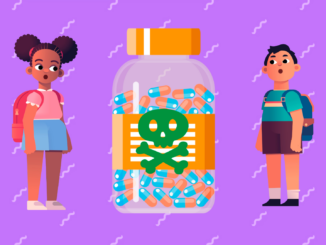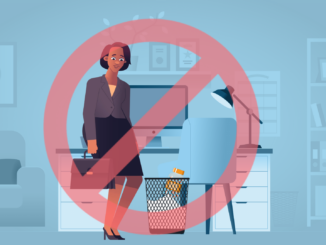
Safe medicine storage might save the life of someone you love
by Rodney Orosco
Today, Americans fill nearly three times as many prescriptions as they did in 1980 and spend five times as much on over-the-counter drugs, according to a report by Safe Kids Worldwide. This increase in more household medications has also resulted in a dangerous unintended consequence, one that can be mitigated by safe medicine storage.
One- and two-year old children make up 53 percent of medicine-related calls to poison control centers across the country. Furthermore, 43 percent of medication-related incidents that land young children in the emergency room are a result of improperly stored medicine, oftentimes found on the ground, nightstand or a purse.
And that phenomenon includes San Joaquin County. Over the past several years, there have been more than 800 visits to emergency departments in the region by children under the age of five due to accidental poisonings.
“Safe medicine storage means out of sight and out of reach — not one or the other.”
Rachel Zerbo, Coalition Coordinator, Safe Kids San Joaquin County
Nationwide, poison control centers get a call about a child ingesting medication that they “found” once a minute — every day. Emergency rooms see roughly four busloads — or over 300 — poisoned children daily, all from medications that should have been properly secured or removed from the home when they were no longer needed and properly disposed of.
Keeping children safe from accidental medication poisoning is about not assuming — not assuming the medication is out of reach of a child and not assuming a child-proof bottle is actually child proof.
“Safe medicine storage means out of sight and out of reach — not one or the other,” said Safe Kids San Joaquin County Coalition Coordinator Rachel Zerbo. “To be safe, medicine should be stored out of sight in a cabinet or drawer where children can’t see it and the medication should be out of reach.”
The dangers of easy-to-reach medications in the home are not limited to only toddlers.
“Teens are also vulnerable to medication poisoning,” said Zerbo. “They may be curious about the effects of medications, or they can be easily influenced by peer pressure.”
While parents can secure medications in the home, it is not enough. All adults with children in their lives should take precautions to keep medication out of reach. Children can easily find medication in a purse, bedside table or on a kitchen countertop.
“If a child spends time at a grandparent or other caregiver’s home, parents need to make sure those caregivers are also storing their medication safely,” said Zerbo.
Safe at home
Thousands of children in the U.S. find their way into medicine bottles they shouldn’t each year, including children in San Joaquin County.
800 visits to San Joaquin County emergency rooms in the past several years by children under the age of 5 were due to accidental poisonings.
64 percent of those visits were attributed to medications.
Do
- DO lock up medications
- DO store medications in their original containers — labels can prevent medications from being mixed up.
- DO keep an updated list of all your prescription medication in your home, so you know if something goes missing.
- DO talk to your pharmacist about how to properly dispose of unused medications.
Don’t
- DON’T leave medications where kids or pets can get them.
- DON’T share prescription medications. A medication that works for one person may cause harm — even death — to someone else, even if symptoms are similar.
- DON’T take medications in front of children, which can lead to them imitating this behavior.
To find a bin near you, go to medtakebackcalifornia.org.
Read more stories about med bins in California’s Central Valley.
Brought to you by the California Drug Take-Back Program and the California Product Stewardship Council.
Recent facebook posts from California Product Stewardship Council

The California Product Stewardship Council (CPSC) is a powerful network of local governments, non-government organizations, businesses, and individuals supporting policies and projects where producers share in the responsibility for managing problem products at their end of life.
CPSC is California’s thought leader and expert on Product Stewardship and the Extended Producer Responsibility (EPR) movement.
EPR enjoys the support of more than 26 million Californians. That’s nearly 70% of the state's population! Nearly 150 resolutions have been passed by California local jurisdictions and organizations supporting a more sustainable and toxic free environment through product stewardship. CPSC works closely with companies who have redesigned products for reuse as well as those who have established pilot or permanent collection programs with some sharing of costs with others in the product chain.
California Product Stewardship Council



